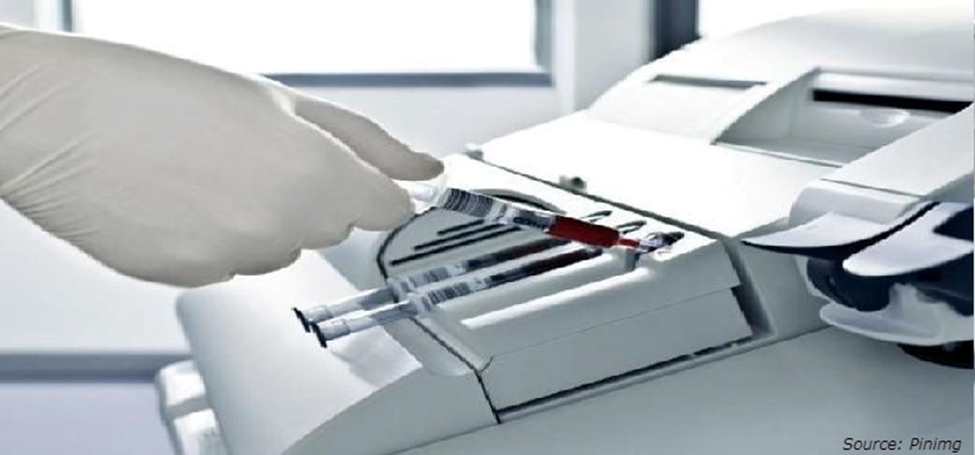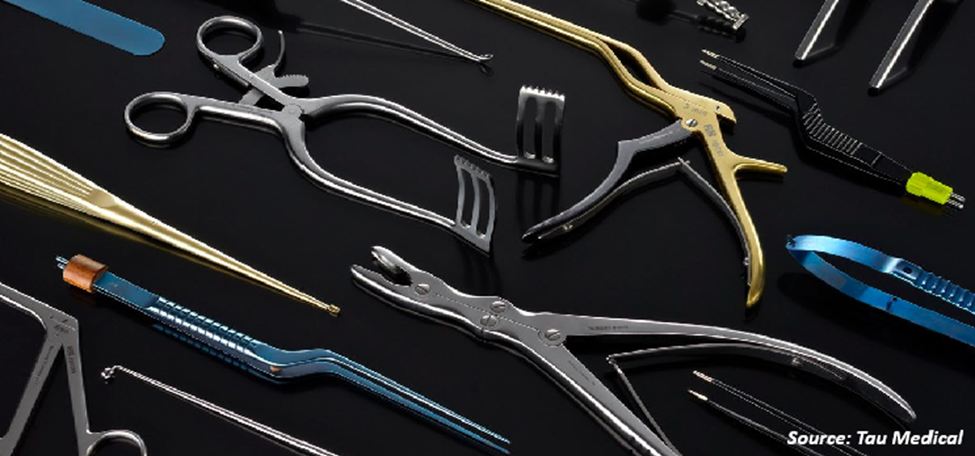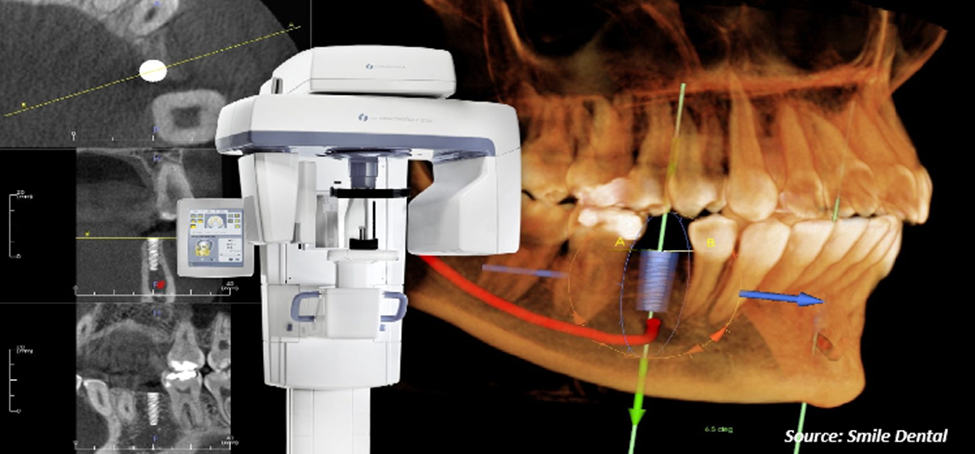Emerging Technologies Shaping the Field of Surgical Instrument
17-Sep-2024

Introduction
The field of surgical instruments is constantly evolving with new technologies. These technologies are changing how surgeries are performed. Moreover, they are improving patient outcomes with enhanced precision, efficiency, and safety.
Surgeons can now push the boundaries of medical intervention, thanks to innovative technologies. Robotic-assisted systems, augmented reality, nanotechnology, and artificial intelligence (AI) are some advanced technologies that are transforming the field of surgical instruments. These emerging technologies are paving the way for a new era in surgical practice.
Let's take a closer look at these exciting advancements and their potential impact on the future of surgery:
Robotic-Assisted Surgical Systems: Robotic surgery, such as the da Vinci Surgical System, enable surgeons to perform minimally invasive procedures with enhanced precision and dexterity. These systems use robotic arms controlled by surgeons, offering greater maneuverability and reducing the invasiveness of certain procedures.
Surgical instrument is an essential part of robotic-assisted surgeries. These instruments are designed to be used with robotic systems and provide surgeons with the precision and control they need to perform complex procedures. Robotic-assisted surgical instruments are typically made of strong, durable materials that can withstand the harsh conditions of surgery. They are also designed to be comfortable and easy to use for the surgeon.
Augmented Reality (AR) and Virtual Reality (VR): AR and VR technologies are incorporated into surgical instruments and training programs. Surgeons can visualize patient anatomy in real-time using AR overlays during procedures, aiding in precise navigation. VR-based simulations allow surgeons to practice complex procedures in a virtual environment, improving their skills and reducing errors.
Smart Surgical Instruments: Smart instruments incorporate sensors, data analysis, and connectivity to provide real-time feedback and enhance surgical decision-making. These instruments can measure tissue characteristics, temperature, and pressure that provide haptic feedback, enabling surgeons to make more informed decisions during procedures. For example, Novo Surgical developed smart surgical instruments with sensors to track location, usage, and sterilization status. These sensors transmit data to the cloud for access by healthcare professionals. This technology aims to enhance surgical safety, prevent errors, and provide real-time data for better decision-making. Novo Surgical is partnering with hospitals to test and improve patient care through these innovative instruments.
Surgical Navigation Systems: Advanced imaging techniques, such as intraoperative Magnetic Resonance Imaging (MRI), Computed Tomography (CT) scans, and 3D reconstruction, are integrated with surgical instruments and navigation systems. Surgeons can use these technologies to visualize and navigate complex anatomical structures during procedures, improving accuracy and reducing complications.
Nanotechnology in Surgical Instruments: Nanotechnology offers potential advancements in surgical instruments by enabling targeted drug delivery, enhanced imaging, and improved wound healing. Nanomaterials with unique properties, such as antimicrobial coatings and self-cleaning surfaces, can be applied to surgical instruments, reducing the risk of infections.
Energy-based Surgical Instruments: Energy-based surgical instruments, including electrosurgical devices and ultrasonic scalpels, use controlled energy to cut, coagulate, and seal tissue during surgery. These instruments provide precise tissue dissection and minimize blood loss, leading to faster procedures and improved patient recovery.
For example, Olympus launched THUNDERBEAT Open Fine Jaw Type X surgical energy devices to perform procedures with more safety than before. This surgical instrument is equipped with two types of energy, ultrasonic and bipolar. Ultrasonic energy is used to cut tissue, while bipolar energy is used to seal blood vessels and prevent bleeding. This combination of energy allows THUNDERBEAT hybrid devices to perform various tasks, including cutting tissue, sealing blood vessels, dissecting tissue, and coagulating tissue.
3D Printing of Surgical Instruments: Additive manufacturing, or 3D printing, allows for producing customized surgical instruments with complex geometries. Surgeons can design and create patient-specific instruments that fit individual anatomical variations, improving surgical outcomes and reducing the risk of complications.
Artificial Intelligence (AI) in Surgical Instruments: AI algorithms are developed to assist surgeons in real-time decision-making during procedures. AI can analyze data from imaging, patient records, and surgical instruments to provide recommendations and improve surgical precision. For example, Swedish company Ortoma AB launched Ortoma Treatment Solution (OTS), an AI-powered software platform for improved implant surgery. OTS utilizes AI algorithms to create a 3D model of the patient's anatomy, aiding surgical planning and guiding the surgeon. Personalized surgical plans can be made with a library of implants and instruments. Clinical validation showed that OTS enhances accuracy and reduces surgery time.
Wireless Instrument Tracking Systems: Radio Frequency Identification (RFID) and other wireless tracking technologies are employed to monitor the location and usage of surgical instruments. These systems help improve inventory management, reduce instrument loss risks, and enhance operating room efficiency.
Biocompatible Materials: Researchers are exploring the use of biocompatible materials, such as bioactive ceramics and biodegradable polymers, in surgical instruments. These materials promote better integration with the body, reduce adverse reactions, and provide improved biocompatibility.
In conclusion, the field of surgical instruments is witnessing a remarkable transformation through advancements in technology. Robotic-assisted systems, augmented reality, virtual reality, smart instruments, surgical navigation systems, nanotechnology, energy-based instruments, 3D printing, artificial intelligence, wireless tracking systems, and biocompatible materials are revolutionizing surgical practices.
These innovations enhance precision, improve surgical outcomes, enable personalized surgical plans, offer real-time feedback, aid in navigation, minimize complications, and optimize patient recovery. With ongoing R&D activities, the future of surgical instruments holds immense potential for further advancements, ultimately benefiting patients and advancing the field of surgery.
About the Author
 Shyam Gupta is a passionate and highly enthusiastic researcher with more than four years of experience. He assists clients in overcoming difficult business challenges by providing actionable insights through exhaustive research. He has closely monitored several industries, such as Biotechnology & Diagnostics, Medical Devices, and Healthcare IT. He has a keen interest in writing articles and uses blogs as a medium to share his thoughts. He spends his time reading and painting when not keeping up with industry news. The author can be reached at info@nextmsc.com
Shyam Gupta is a passionate and highly enthusiastic researcher with more than four years of experience. He assists clients in overcoming difficult business challenges by providing actionable insights through exhaustive research. He has closely monitored several industries, such as Biotechnology & Diagnostics, Medical Devices, and Healthcare IT. He has a keen interest in writing articles and uses blogs as a medium to share his thoughts. He spends his time reading and painting when not keeping up with industry news. The author can be reached at info@nextmsc.com
Add Comment
Related Blogs
Role Of Companies In Shaping The Blood Gas And Electrolyte Analyzer Market
According to Next Move Strategy Consulting, the global blood...
Analysis of Key Players Operating in the Global Surgical Instrument Industry
Next Move Strategy Consulting forecasts more than 1.7-fold g...
CBCT Industry Is Dominated By Dentsply Sirona, Philips, & Vatech With More Than 45% – Know Why
Next Move Strategy Consulting predicts a significant growth...










